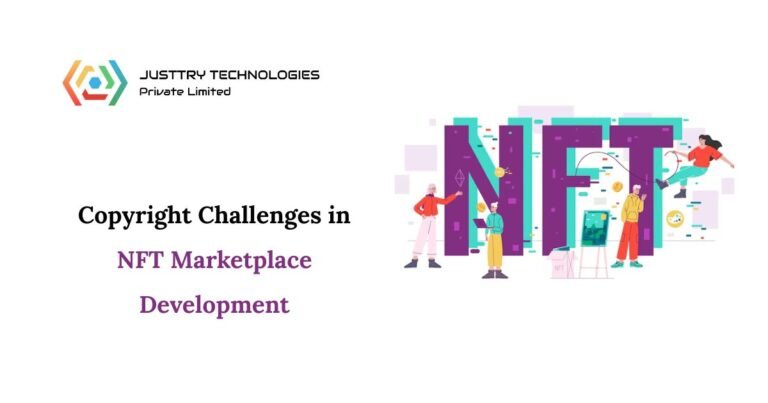The blockchain industry has transformed how businesses, creators, and communities interact with digital assets. From Initial Coin Offerings (ICOs) to utility tokens, non-fungible tokens (NFTs), and governance tokens, each launch requires more than just technical development—it needs a strong marketing framework. Without a structured token marketing strategy, even the most innovative projects risk fading into obscurity.
A token marketing framework is not just about generating hype before launch; it’s about creating a roadmap that connects product development, community trust, investor engagement, and long-term adoption. Let’s explore how such a framework drives success from the moment of launch to sustained growth.
Understanding Token Marketing Frameworks
A token marketing framework is a structured approach to promoting a crypto token across its lifecycle. Unlike one-off promotional campaigns, a framework is holistic, addressing pre-launch preparation, launch momentum, and post-launch sustainability.
Key pillars include:
-
Brand Positioning: Clearly communicating the token’s purpose and utility.
-
Community Engagement: Building loyal, participatory audiences through Discord, Telegram, Twitter (X), and beyond.
-
Investor Relations: Delivering transparency and updates that encourage investor confidence.
-
Compliance & Education: Navigating regulations and educating the public to reduce skepticism.
-
Growth Loops: Leveraging partnerships, staking models, and incentive structures to fuel adoption.
With these elements in place, a project can avoid short-lived hype and instead grow into a long-term ecosystem.
Pre-Launch: Setting the Foundation
The pre-launch phase is arguably the most critical. It determines whether your token generates enough excitement and trust to achieve momentum at launch.
a. Market Research & Positioning
-
Identify the USP (Unique Selling Proposition): Why should your token exist? Does it solve scalability, governance, or accessibility problems?
-
Competitor Analysis: Understanding what other projects are doing helps position your project as unique.
b. Community Building
Community is the lifeblood of token success. Creating Telegram groups, Discord channels, and early Twitter engagement builds anticipation. Offering sneak peeks, AMAs (Ask Me Anything sessions), and alpha leaks helps people feel like insiders.
c. Strategic Partnerships
Forging relationships with influencers, blockchain incubators, and exchanges pre-launch builds credibility. Partnerships can create network effects, multiplying exposure beyond paid ads.
d. Tokenomics & Whitepaper Communication
A well-designed tokenomics structure is a marketing tool in itself. It answers questions like:
-
What is the total supply?
-
How are tokens allocated (team, investors, community rewards)?
-
What prevents inflation or value erosion?
When these are explained transparently in a whitepaper or litepaper, it builds trust before a single token is sold.
The Launch Phase: Driving Momentum
The launch is where visibility peaks. The goal here is to maximize awareness while ensuring smooth distribution.
a. Multi-Channel Campaigns
Successful launches use integrated campaigns across platforms:
-
PR & Media: Press releases, interviews, and sponsored posts on CoinTelegraph, Decrypt, and niche Web3 blogs.
-
Paid Ads: Targeted campaigns on crypto networks like CoinMarketCap, Twitter Ads, and Google Display.
-
Influencer Marketing: Thought leaders amplify reach, lending authority to the token.
b. Exchange Listings & Liquidity
Listing on reputable exchanges (CEX and DEX) not only provides liquidity but also signals legitimacy. Marketing should highlight these milestones to attract traders.
c. Gamification & Incentives
Airdrops, referral programs, and staking rewards create excitement. These not only drive immediate sign-ups but also incentivize token holding.
d. Transparency in Communication
Regular updates during the launch ensure credibility. If issues arise (like delayed exchange listings), proactive communication prevents panic selling.
Post-Launch: Sustaining Growth
The real challenge starts after the initial hype. Many tokens fail here, but a robust framework ensures longevity.
a. Consistent Content Marketing
Educational content—blogs, explainer videos, webinars—keeps audiences engaged. Projects that regularly release roadmap updates and tutorials stand out as trustworthy and future-oriented.
b. Governance and Utility Expansion
Tokens must evolve beyond speculative assets. Providing governance features, in-game utilities, or DeFi integrations ensures ongoing relevance.
c. Strategic Partnerships & Ecosystem Growth
Continuous partnerships with DeFi projects, NFT ecosystems, or real-world brands expand the token’s utility and user base.
d. Community-Driven Campaigns
The best token projects turn communities into advocates. Examples include:
-
DAO voting initiatives
-
Bounty programs for creating memes, blogs, or translations
-
Token-based rewards for participation
This not only decentralizes marketing but also strengthens loyalty.
e. Reputation & Compliance Management
As regulations evolve, compliance becomes a growth driver. Proactively addressing KYC/AML (Know Your Customer/Anti-Money Laundering) helps avoid sudden roadblocks. Legal transparency also reassures investors.
Measuring Token Marketing Success
A token marketing framework should not be guesswork. Using clear metrics ensures efforts align with goals.
a. Pre-Launch KPIs
-
Community size and engagement rates (Telegram/Discord activity).
-
Whitepaper downloads and email sign-ups.
-
Media coverage and sentiment analysis.
b. Launch KPIs
-
Token sale participation rate.
-
Social media mentions and reach.
-
Exchange trading volumes in the first week.
c. Post-Launch KPIs
-
Holder retention rate (HODL metrics).
-
Utility adoption (staking participation, governance votes).
-
Partnership growth and ecosystem expansion.
-
Long-term price stability relative to utility delivery.
Measuring these consistently ensures strategy refinements are data-driven, not reactive.
Real-World Examples
Binance Coin (BNB)
BNB started as a utility token for discounted trading fees. Its framework expanded with the Binance Smart Chain, staking options, and cross-chain compatibility, turning it into one of the top global tokens.
Polygon (MATIC)
MATIC leveraged clear positioning as a Layer 2 scaling solution, coupled with extensive partnerships with brands like Starbucks and Reddit. Its strong community marketing and ecosystem incentives made it a long-term success.
ApeCoin (APE)
Despite market volatility, ApeCoin demonstrated how community branding, DAO governance, and high-profile partnerships (like Yuga Labs and metaverse projects) can sustain a token narrative.
These examples highlight that long-term token success relies less on speculative trading and more on ecosystem-driven marketing frameworks.
Future Trends in Token Marketing
-
Web3-native Marketing Tools: DAOs and decentralized ad networks will reduce reliance on Web2 advertising.
-
AI-Powered Personalization: AI tools will analyze on-chain data to deliver targeted offers.
-
Regulation as a Differentiator: Projects that embrace transparency early will attract institutional investors.
-
Community as a Product: Token marketing will shift from “building communities” to “communities building the token.”
Understanding these trends ensures a project remains future-proof.
Conclusion
A successful token launch does not end with selling tokens—it begins there. Without a structured marketing framework, even innovative tokens risk short-lived hype followed by steep declines. By combining strategic pre-launch preparation, launch momentum, and post-launch sustainability, projects can drive real value and long-term growth.
A token marketing framework is not a one-size-fits-all solution. It’s a living roadmap, adapting to market conditions, community needs, and regulatory landscapes. Projects that prioritize transparency, utility, and community-first engagement will thrive not just during their launch but well into the future of Web3.





